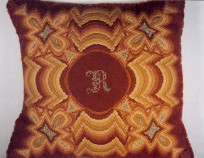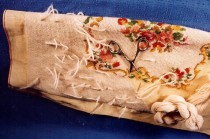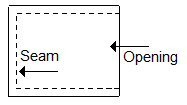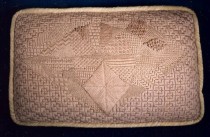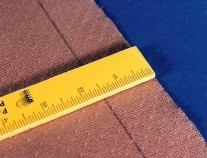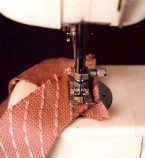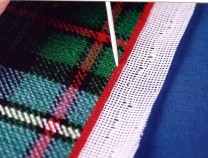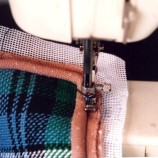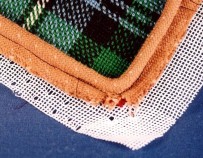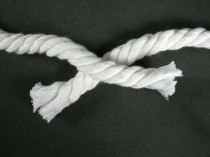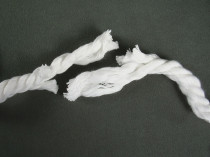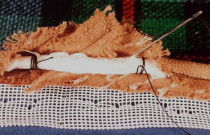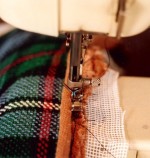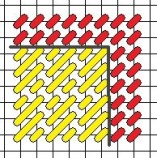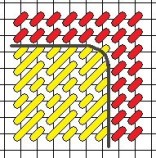How to Finish a Pillow
Simple Pillow
There is quite an array of materials from which to choose when it comes to stuffing pillows. You can buy a pre-made pillow for, or you can find polyester batting, wool and feathers. Pre-made forms are usually square and come in standard sizes such as 12”X12”. Make your needlepoint project the size of your intended pillow, plus 2 rows of Continental stitches on all four sides.
Be sure your needlepoint is flat. If not, you will need to wet block or steam block your project.
If you have not done so, stitch 2 rows of Continental stitches on all four sides of your project. This is for seam allowance.
Place the needlepoint and pillow fabric right sides together. You may wish to pin to secure while sewing the seam.
When finished, turn the right side out.
Insert the pillow form into the opening. Turn the seam allowance of the needlepoint and fabric into the pillow, and hand stitch the entire length.
Polyester batting is a loose fiber that can be shaped into any form. Round, cylinder, triangle and other shapes turn out best when they are stuffed with polyester fill. To use, stitch between the Continental rows and the motif on all sides, leaving a gap large enough to turn the needlepoint and fabric inside out. When this is finished, you will stuff as needed. You will then tuck the raw edges inside and finish stitching the edge by hand.
Pillow with Piping
Adding piping to the seams of knife edged pillows as well as boxed pillows creates a wonderful, finished look. You might consider piping as a frame for the needlepoint depending upon the effect you wish to achieve. If the stitching uses many colors, you might simply want to use the color of your backing fabric.
Add bias cording around your pillow by following these simple steps:
Corners
Whether you use a pre-made pillow form, loose batting or feathers, your pillow can have round or square corners. Not all designs are good candidates for round corners. Four-Way Bargello, plaids, square motifs and other designs that create exact rectangle patterns may not be appropriate on round-cornered pillows.
Here, you can see a square corner. Note the small red stitches. They represent Continental stitches for the seam allowance. The yellow Cashmere stitches are the stitched motif. Long horizontal and vertical gray lines represent the placement of the machine stitching. A very sharp corner was achieved by stitching along the Continental rows.
In this diagram, you will notice the same set of stitches. This time, the corner has been stitched to make a soft curve. Imagine a nosegay of flowers on this pillow. The roundness of the flower petals and bending stems, combined with the soft edges of the pillow, create a relaxed feeling. Piping, cording and braids can all be used with curved and rounded corners.


